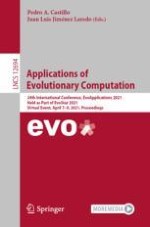2021 | OriginalPaper | Buchkapitel
Real Time Optimisation of Traffic Signals to Prioritise Public Transport
verfasst von : Milan Wittpohl, Per-Arno Plötz, Neil Urquhart
Erschienen in: Applications of Evolutionary Computation
Aktivieren Sie unsere intelligente Suche, um passende Fachinhalte oder Patente zu finden.
Wählen Sie Textabschnitte aus um mit Künstlicher Intelligenz passenden Patente zu finden. powered by
Markieren Sie Textabschnitte, um KI-gestützt weitere passende Inhalte zu finden. powered by
